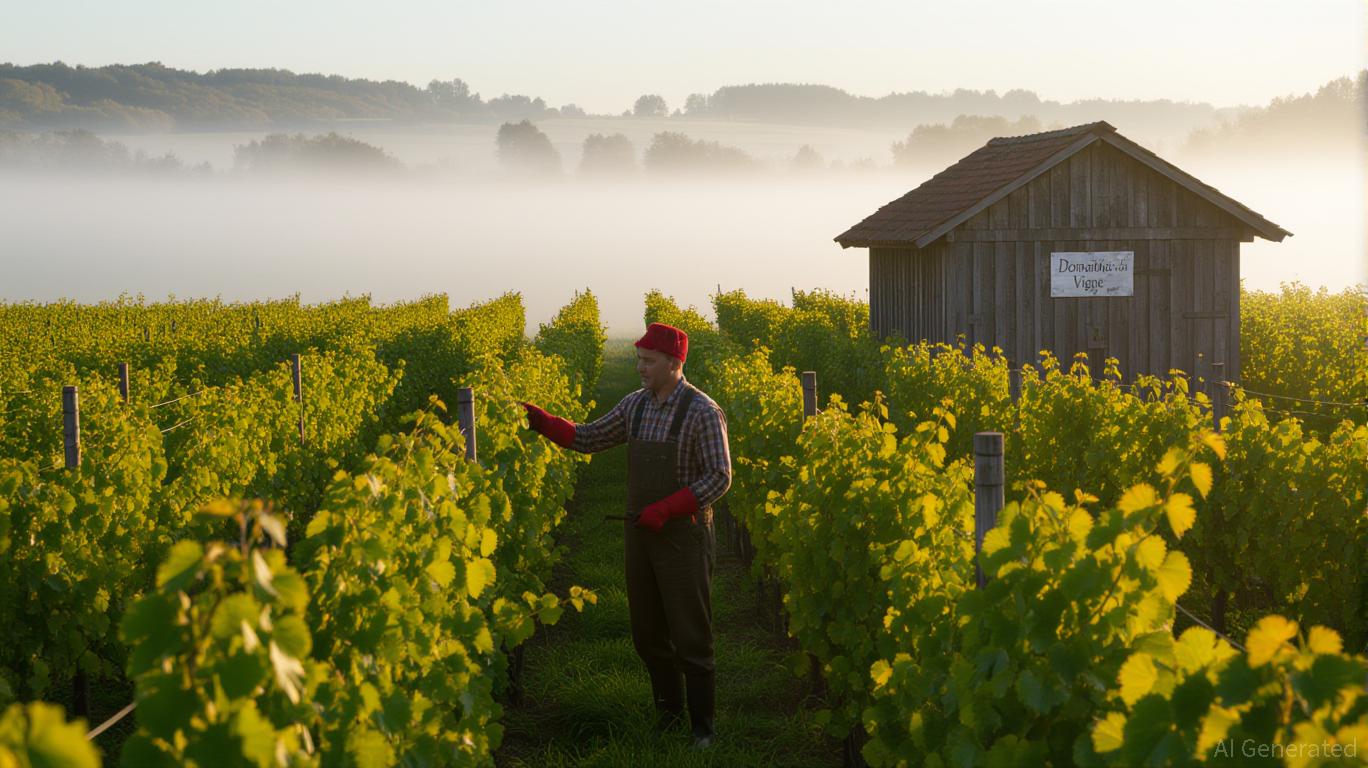
The 2024 French wine harvest has emerged as a defining moment for the global fine wine market. With Burgundy, Bordeaux, and Champagne experiencing some of the smallest yields in a century, the interplay of scarcity, quality, and investor demand is reshaping market dynamics. This shortfall, driven by climate-related challenges such as mildew, hail, and poor fruit set, is not merely a temporary setback but a harbinger of a new era in viticulture. For investors, it presents a compelling case for strategic allocation in premium vintages, where historical patterns suggest that scarcity often translates into long-term value.
The 2024 Harvest: A Convergence of Adversity
Burgundy, the crown jewel of French wine, faces a 25% decline in production compared to 2023, with the Côte d’Or region—home to iconic Grand Cru vineyards—bearing the brunt of the crisis. Bordeaux, historically a bastion of volume and consistency, is projected to produce 10% less in 2024, its lowest output since 2017. Champagne, too, is grappling with a 19% drop in AOP production, driven by spring frosts and hailstorms. These reductions are not isolated incidents but part of a broader trend: since 2017, France has seen six of its ten smallest harvests, underscoring the accelerating impact of climate change on viticulture.
The implications for the secondary market are profound. Reduced yields inherently limit supply, particularly for top-tier wines already in high demand. In Burgundy, where scarcity is a perpetual feature, the 2024 vintage is expected to amplify the allure of its most sought-after bottlings. Bordeaux, meanwhile, faces a dual challenge: not only does it contend with lower yields, but it must also navigate the lingering effects of overpricing in the post-2015 era, which has left many vintages trading below their original en primeur prices. Champagne, with its prestige and brand equity, remains a relative safe haven, though even its 2024 vintage will test the resilience of its market.
Historical Precedents: Scarcity as a Catalyst for Value
To understand the investment potential of the 2024 vintage, one must look to the lessons of the past. The 2017 and 2021 vintages, both marked by significant yield reductions, offer instructive parallels. In 2017, Burgundy’s harvest was among the smallest in decades, yet its wines—characterized by high acidity and concentration—have retained strong secondary market appeal. The Liv-ex Burgundy 150 index, which tracks the performance of top Burgundy wines, has surged over 650% since its inception, outpacing Bordeaux and Champagne. This resilience is rooted in Burgundy’s reputation for producing age-worthy, terroir-driven wines that command loyalty among collectors.
Bordeaux’s 2017 vintage, while lower in yield, initially struggled to justify its pricing. However, as the market corrected, older vintages like 2017 and 2018 have emerged as undervalued opportunities. The 2021 Bordeaux vintage, by contrast, has underperformed, with many wines trading at or below their original release prices. This divergence highlights the importance of vintage-specific quality and the role of market sentiment in shaping price trajectories.
Champagne’s 2017 and 2021 vintages, though affected by similar challenges, have fared better. The region’s prestige cuvées, such as Dom Pérignon and Cristal, have maintained their value, even as broader fine wine markets have softened. This underscores the power of brand equity and the enduring demand for celebratory, high-status wines.
The 2024 Vintage: A Strategic Inflection Point
The 2024 vintage is poised to follow a similar trajectory, with its scarcity-driven dynamics creating opportunities for discerning investors. In Burgundy, the combination of reduced yields and high-quality fruit—despite the challenges—positions the 2024 vintage as a potential standout. Historical data suggests that Burgundy’s low-yield vintages, such as 2017 and 2021, have retained or even appreciated in value over time, particularly for top-tier producers like Domaine de la Romanée-Conti.
Bordeaux’s 2024 vintage, while smaller, may benefit from a shift in focus toward quality over quantity. The region’s ongoing vineyard uprooting program, which has reduced 8,000 hectares of vines since 2020, has already begun to address oversupply concerns. However, investors must remain cautious: the market’s correction of post-2015 vintages indicates that not all 2024 wines will see price appreciation. Instead, the most promising opportunities lie in estates with strong track records and vintages that demonstrate exceptional balance and aging potential.
Champagne’s 2024 vintage, though smaller than the five-year average, retains its appeal due to the region’s regulatory framework and brand strength. The AOP designation ensures quality, while the limited supply of prestige cuvées from vintages like 2024 will likely drive demand. For investors, this represents a chance to secure bottles at entry points before they enter their first plateau of maturity.
Investment Advice: Navigating the New Normal
The 2024 shortfall is not an anomaly but a symptom of a broader transformation in the wine industry. Climate change, shifting consumer preferences, and economic volatility will continue to shape market dynamics. For investors, the key lies in adopting a long-term, value-driven approach:
Prioritize Scarcity and Quality: Focus on vintages with historically strong performance and limited supply. In Burgundy, this includes 2024 and 2017; in Champagne, 2024 and 2017. Avoid Overpriced New Vintages: The post-2015 Bordeaux market serves as a cautionary tale. Instead, consider undervalued back vintages like 2017 or 2018, which offer better risk-adjusted returns. Diversify by Region: While Burgundy and Champagne remain resilient, Bordeaux’s underperformance highlights the need for geographic diversification. Allocate capital to regions with strong brand equity and regulatory safeguards. Monitor Macroeconomic Trends: Rising interest rates and inflation have dampened fine wine prices in 2024. However, as these pressures ease, the market is likely to rebound, particularly for premium vintages. Conclusion: A Vintage of Opportunity
The 2024 French wine shortfall is a stark reminder of the fragility of traditional industries in the face of climate change. Yet, for investors, it also represents a rare confluence of scarcity, quality, and market correction. By learning from historical patterns and adopting a strategic, long-term perspective, fine wine investors can position themselves to capitalize on the opportunities created by this vintage. In a world of uncertainty, the timeless appeal of rare, high-quality wines remains a compelling hedge against volatility.


Dining and Cooking